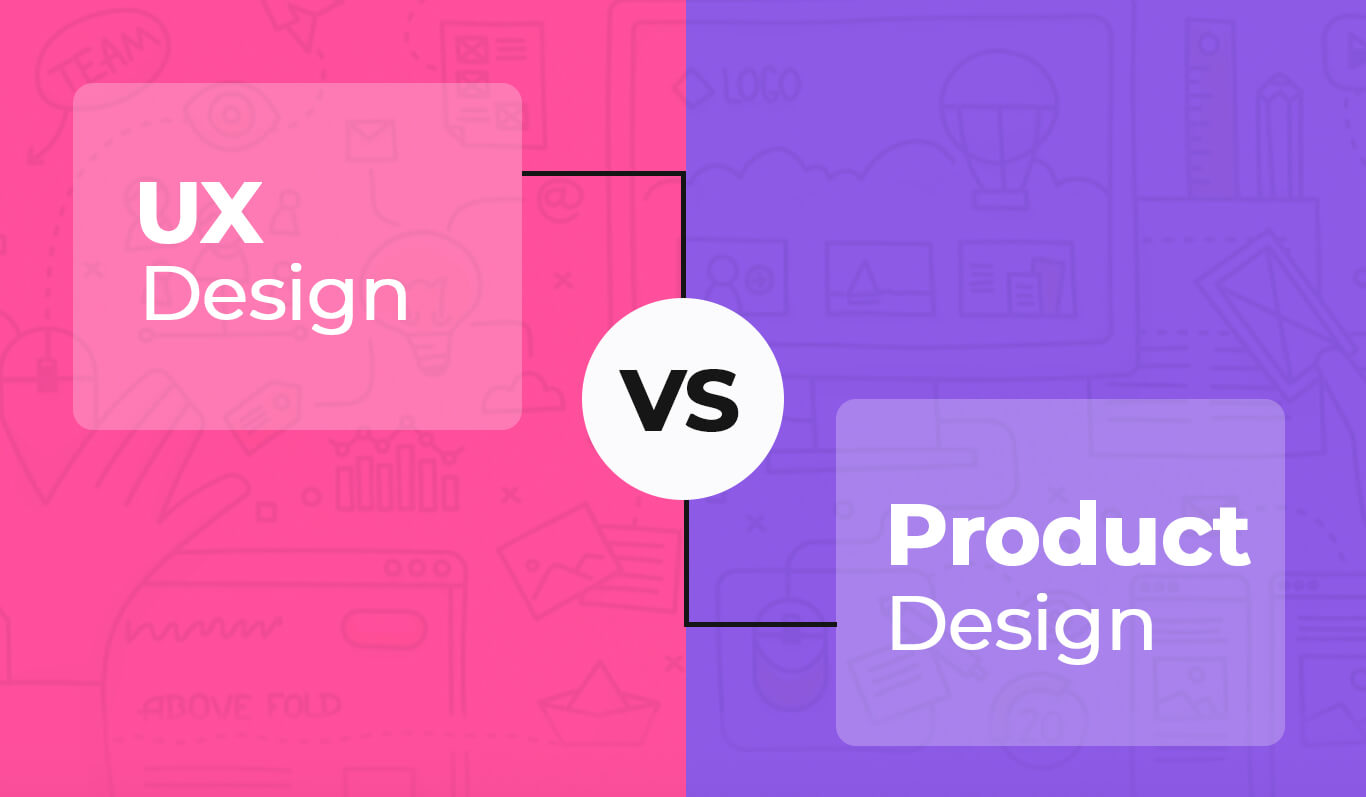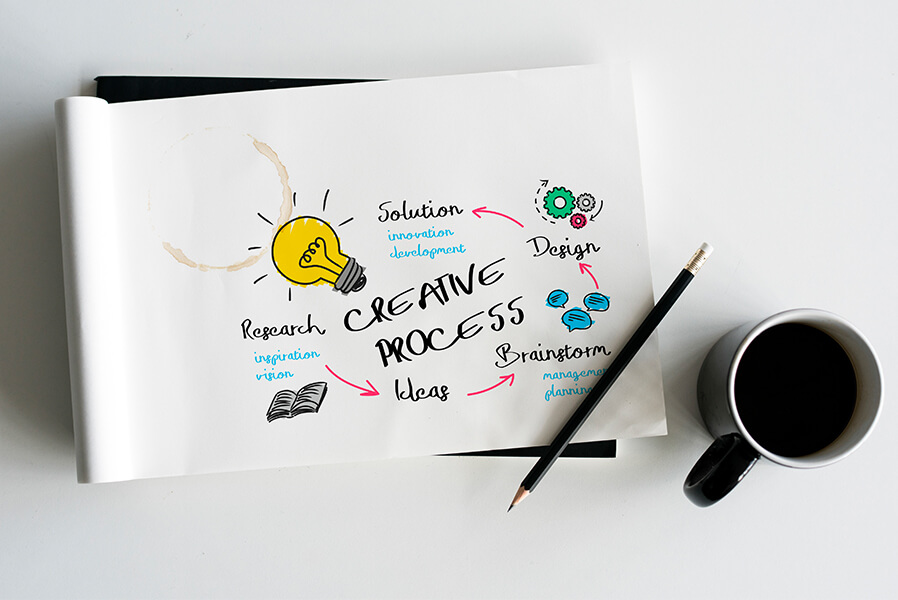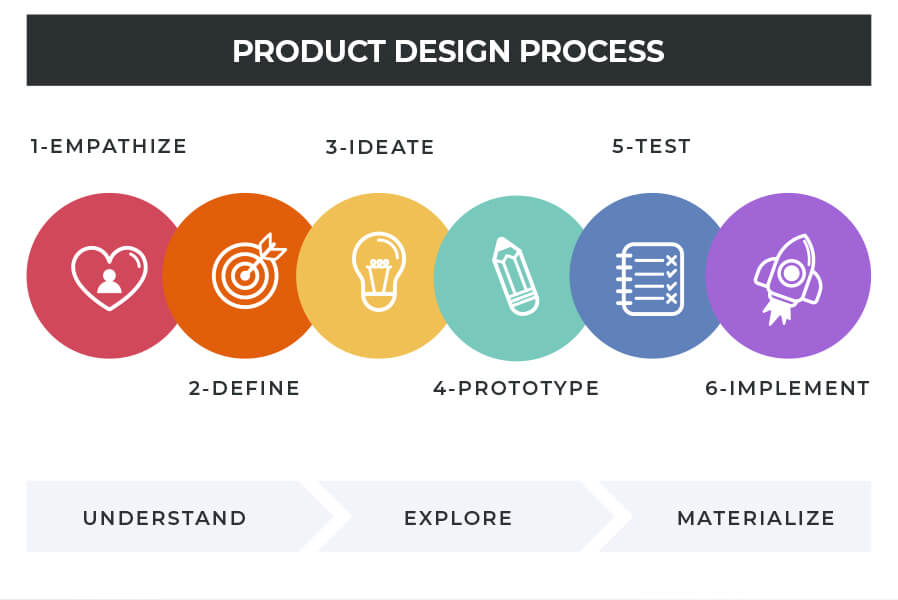A detailed comparison between UX Design and Product Design

With evolving technologies and the design process associated with them, the line between UX Design and Product Design often overlaps and sometimes fades away completely with both merging together to perform similar tasks. Rapid technological advancement and changing user preferences have resulted in the fusing of UX Design and Product Design roles. But to be blunt, if they were the same each wouldn't have a different title now, would they? Even though the differences between UX design and product design are subtle, they are readily apparent when it comes to the ways each approaches processes, thinking, priorities, and outcomes.
Understanding the basics of UX design

The user experience (UX) refers to all the interactions a user has with a product or service. It is the personal experience customers have while interacting with a product's interface.
Let's take an e-commerce website as an example. All of us have had an unpleasant shopping experience. Maybe it was the slow to load webpage or customer service or insufficient product description or inaccurate images. The customer will have a poor experience if they find the buying process to be too long, complex, and confusing. Instead, if her purchasing experience is easy and uninterrupted, then it is considered good UX.
A good website and user experience will most likely drive the customer to choose and purchase products on those websites.
Although functionality is still key, experience has become even more critical: the better the experience you offer, the more likely you are to gain customers over your competitors: UX is more of a differentiator than ever in a crowded market.
The goal of UX design is to create extremely user-friendly interfaces that can improve users' satisfaction and usability.
What is Product design

We live in an age when the only constant is 'change', so it isn't surprising that our culture as consumers is always evolving. Technology has become an integral part of our daily lives and we expect everything to be at our fingertips at all times. We also expect as customized an experience as possible. Whether using our smartphones to learn a new skill or browsing a recipe for the leftover ingredients, we have become increasingly reliant upon different forms of technology. This has helped us to satisfy a myriad of needs. What role does product design play in how we consume goods and services?
Product design involves the creation of a brand-new product that will be sold by a company to its consumers. But designing a product is a very broad concept. New products are created through the efficient and effective generation and development of ideas through a design process. Thus, product design can be considered a major aspect of all product development. Nevertheless, most business experts will agree that product design encompasses finding a market need, understanding the user's needs, developing a proper solution, and validating the solution with real users.
What are the similarities between UX Design and Product Design?
The basis of UX Design and Product Design is Design Thinking. Using Design Thinking, you discover and define a usability issue. You then design an empathetic solution based on that problem. You are taking a user-centred approach at every step along the solution journey by not only finding a solution but also paying close attention to the user's needs. Design isn't a linear process. It changes constantly.
-
In both UX Design and Product Design, the designer's focus is on creating a better product for the end-user.
-
Quantifying and analysing data are aspects of both UX Design and Product Design.
-
Designers employed in UX Design and Product Design use similar tools during their respective processes.
What are the differences between UX Design and Product Design?
UX Designers are passionate about their users, whereas Product Designers are passionate about the company and the organization, as well as their users. They have an excellent business sense, and they have a very thorough understanding of the domain in which they work.
Traditionally, UX Designers are tasked with developing products before launch, while Product Designers are tasked with updating already-launched products.
In the initial stages of a product's development, the roles of UX Designer and Product Designer are the same. Following the launch, UX Designers typically move on to other projects, sometimes revisiting it as a re-work project at a later time. A Product Designer, on the other hand, continues to make improvements to a product with each new release.
A product designer may continue designing after it's launched, but in essence, quite a few things change once it's in use. Users need to be trained on redesigned workflows and educated about updated features. To prevent breaking existing functionality that is currently in use, development teams become more circumspect. To accommodate Agile development cycles, large design changes are often broken up into smaller "releases."
What is the role of a UX designer? What are the requirements for a UX designer?
A user-centric approach to design is about creating highly intuitive interfaces that enhance users' satisfaction and usability and are derived entirely from their needs. Any UX designer building interfaces should, before anything, focus on users’ needs and perceptions and understand:
What kind of user will use the website/app?
What will be their expectations?
How can I make their experience as smooth and easy as possible?
UX designers aim to ensure that the product actually fulfils the user's needs and ensures user satisfaction. It's designed with user interaction in mind to keep improving the usability and accessibility of the product.
UX designers take responsibility for the whole design thinking process, from the research to the ideation process, and remain customer-focused throughout. Understanding the user's mindset is vital to this role, as is performing user testing and prototyping. To put it simply, they make sure the product is optimized to meet the needs of users.
The common requirements of a UX designer include:
-
a strong understanding of the design process
-
proficiency in industry-relevant UX design tools
-
experience in planning and conducting user research and competitor analysis
-
the ability to interpret data and qualitative feedback
-
experience in creating user stories, personas, and storyboards
-
prototyping and wireframing skills
-
understanding of interaction design principles
-
understanding of business metrics and the ability to translate company goals and objectives into digital experiences
Who is a product designer? What are the requirements for a product designer?
'Product' and 'Product Design' can refer to any physical or digital product and include digital products. A modern product would be a website, software application, chatbot, etc. With this in mind, creating successful products requires many components, and one of the most crucial ones is a striking design. From seamless mobile applications to the functionality of a charging cable, a successful product begins with a graceful design.
As a multi-industry field that includes real estate, lifestyle, architectural design, healthcare, technology and many other industries, product design encompasses everything from cutting-edge medical equipment to the development of innovative enterprise solutions.
As a product designer, you have a wide scope of responsibilities and can think of yourself as a multidisciplinary versatile person who does UX, UI, coding, project management, and problem-solving. The product designer works to solve problems that arise during the initial design process.
Identifying and solving these problems will require teams to produce multiple test plans, produce wireframes, and go through rounds of A/B testing. Along with supporting developers and working with marketing teams, product designers will also make sure the brand is consistent with the product.
Product designers are primarily responsible for overseeing product development to ensure that it is relevant, cost-effective, and functional, as well as ensuring all stakeholders are satisfied.
The skills required for a product designer include:
-
A strong understanding of how to apply design thinking when planning and scoping project work
-
proficiency in industry-relevant design and prototyping tools
-
a user-centric mindset
-
strong wireframing/prototyping skills
-
strong visual and verbal communication skills
-
strong cross-functional collaboration and communication skills
Thus, to conclude….
According to what you can see above, UX Design and Product Design are similar in many ways but they differ in their execution and mindset. You could think of it as a choice between breadth and depth, with UX Designers looking at a wide range of possibilities for successful products, and Product Designers exploring the evolution of products over time. Although, there are some exceptions to this with many environments not fitting neatly into one category or the other.
FAQs
What is the difference between UX Design and Product Design?
UX Design will help to identify the problems a user faces while the Product Design will help to develop a solution through a new product or service.
How are Product Design and UX Design important for a business?
A great UX Design improves customer loyalty and widens customer reach. Product Design on the other hand helps to build products that resonates with the company’s ideology and principles and are based on customer preferences.
Request a Quote
Categories
Popular posts
Best Practices for Software Product Engineering Every CTO Should Implement
2023-14-18How to Build Your Own On-Demand Carpooling App Services?
2023-08-25How to Start an On-Demand Fuel Delivery Business: A Comprehensive Guide
2023-07-28Empowering Miners: How Fleet Management Apps are Transforming the Mining Industry?
2023-07-21A Complete Guide to Develop a Food Delivery App for Restaurants in 2023
2023-07-08Mobile Apps Transforming the Travel Industry: A Game-Changer in Travel Planning and Experience
2023-07-07
